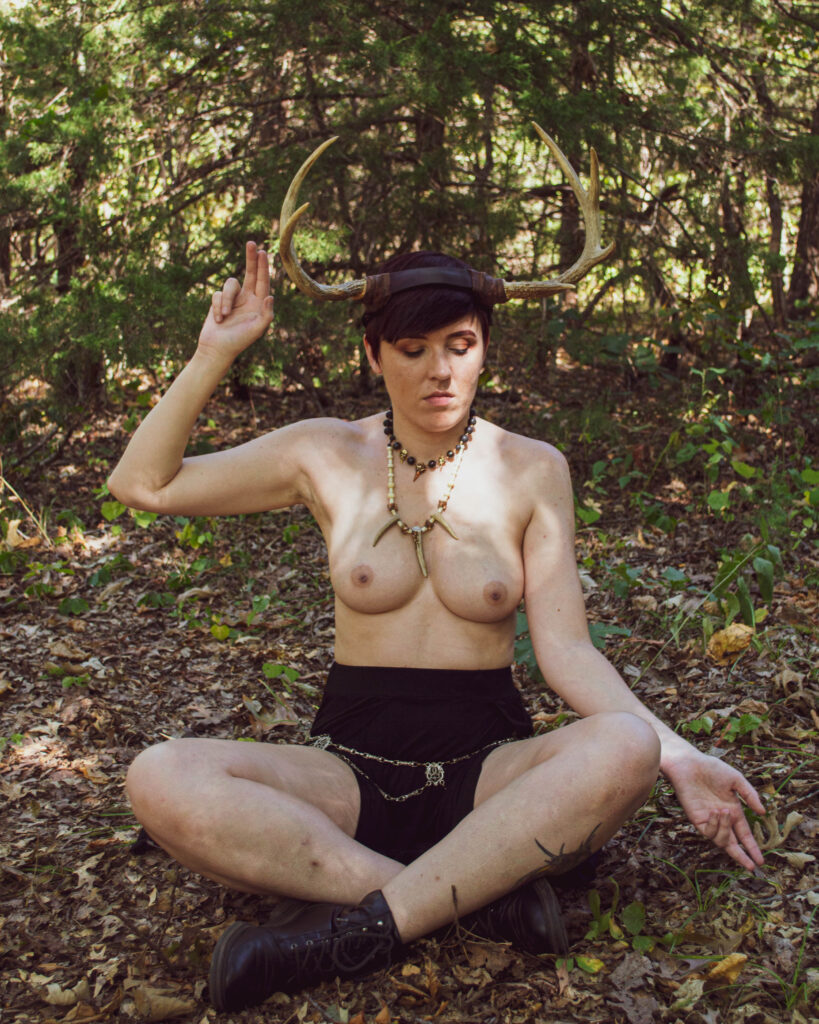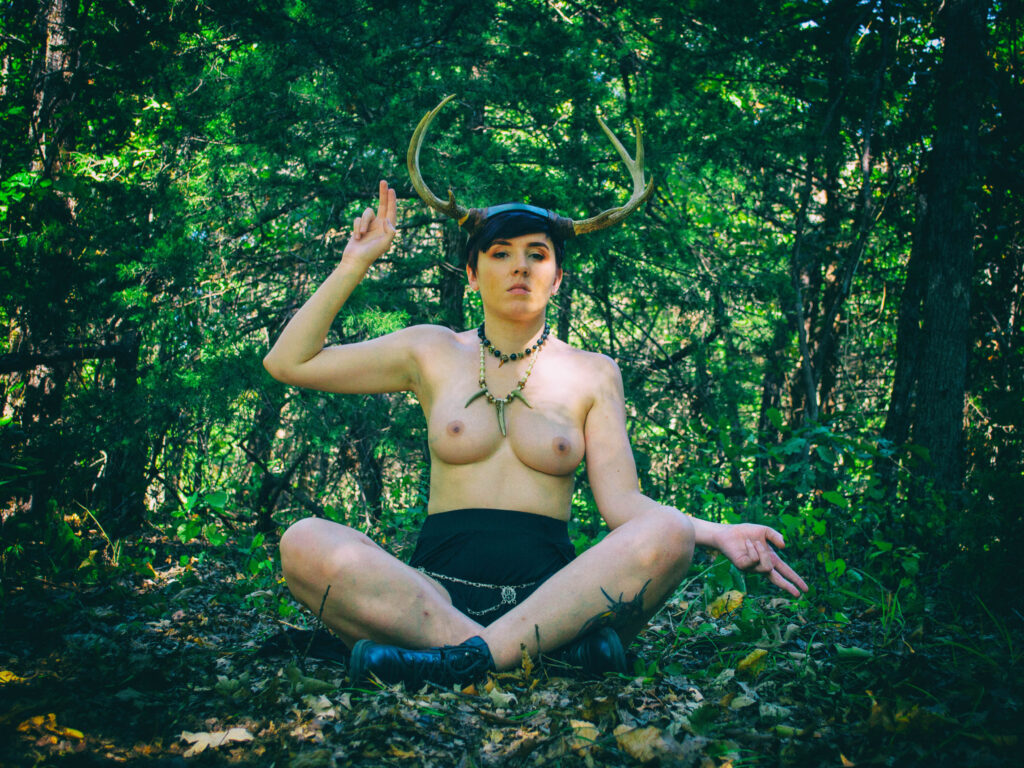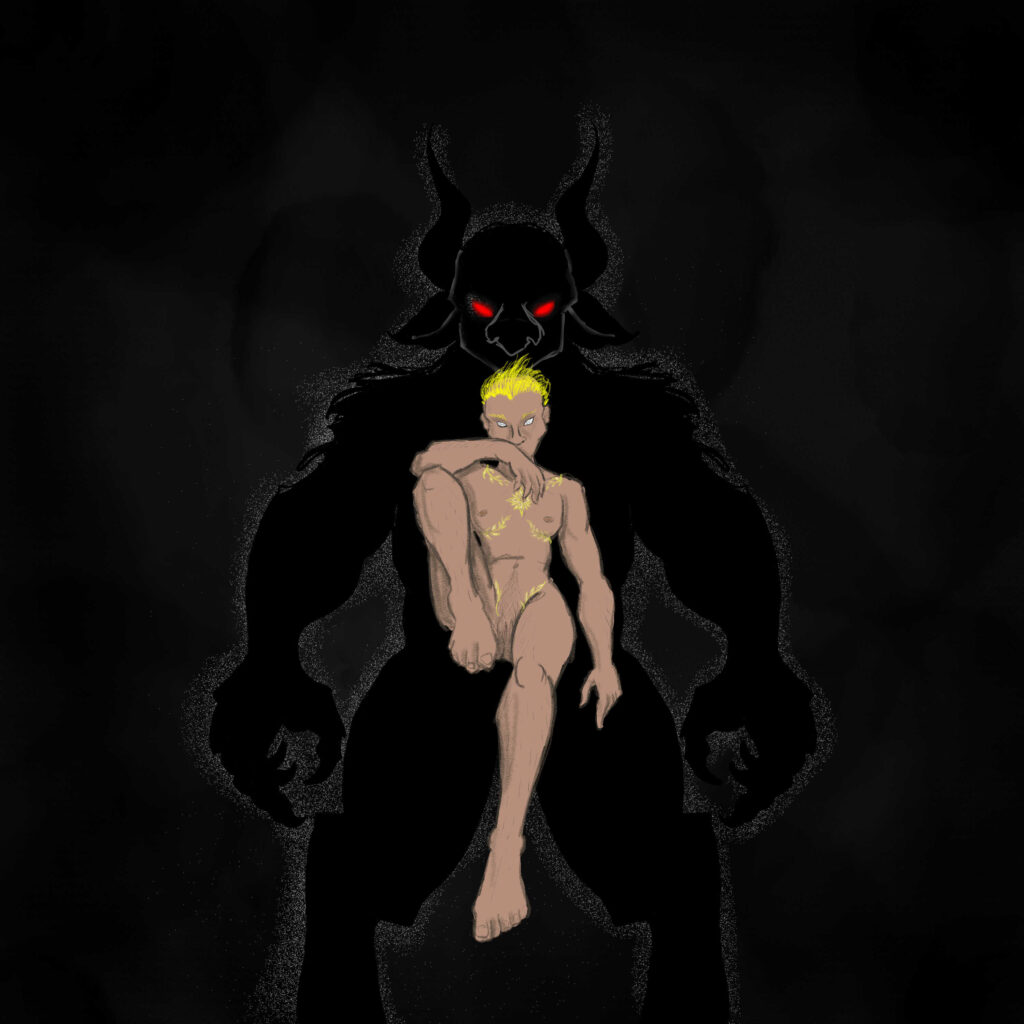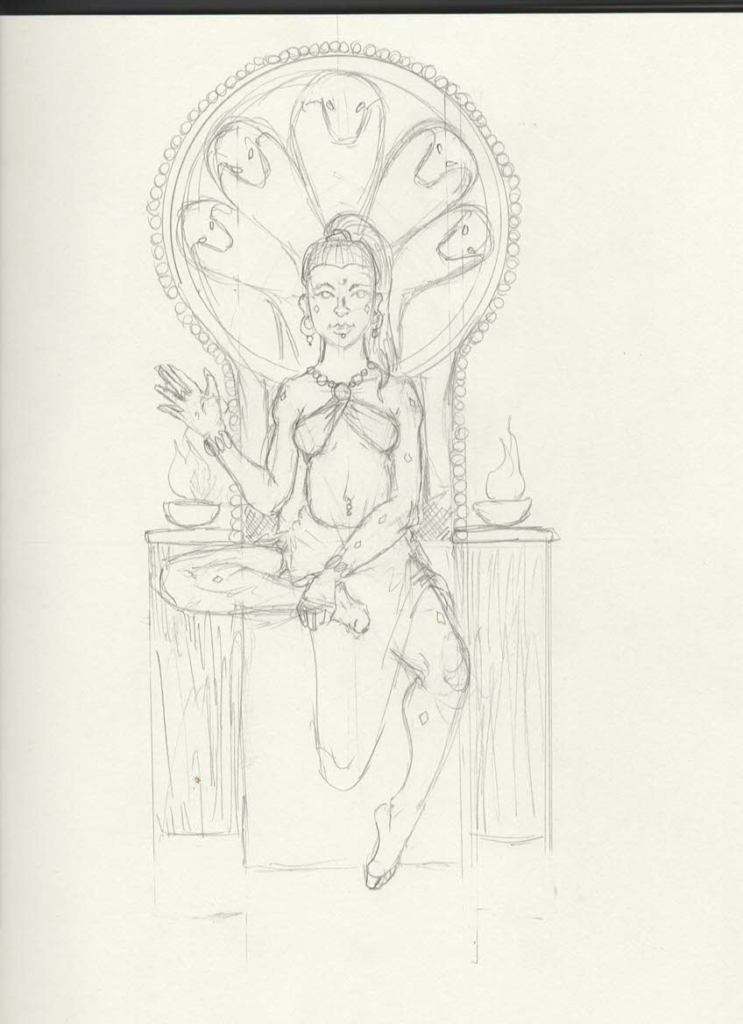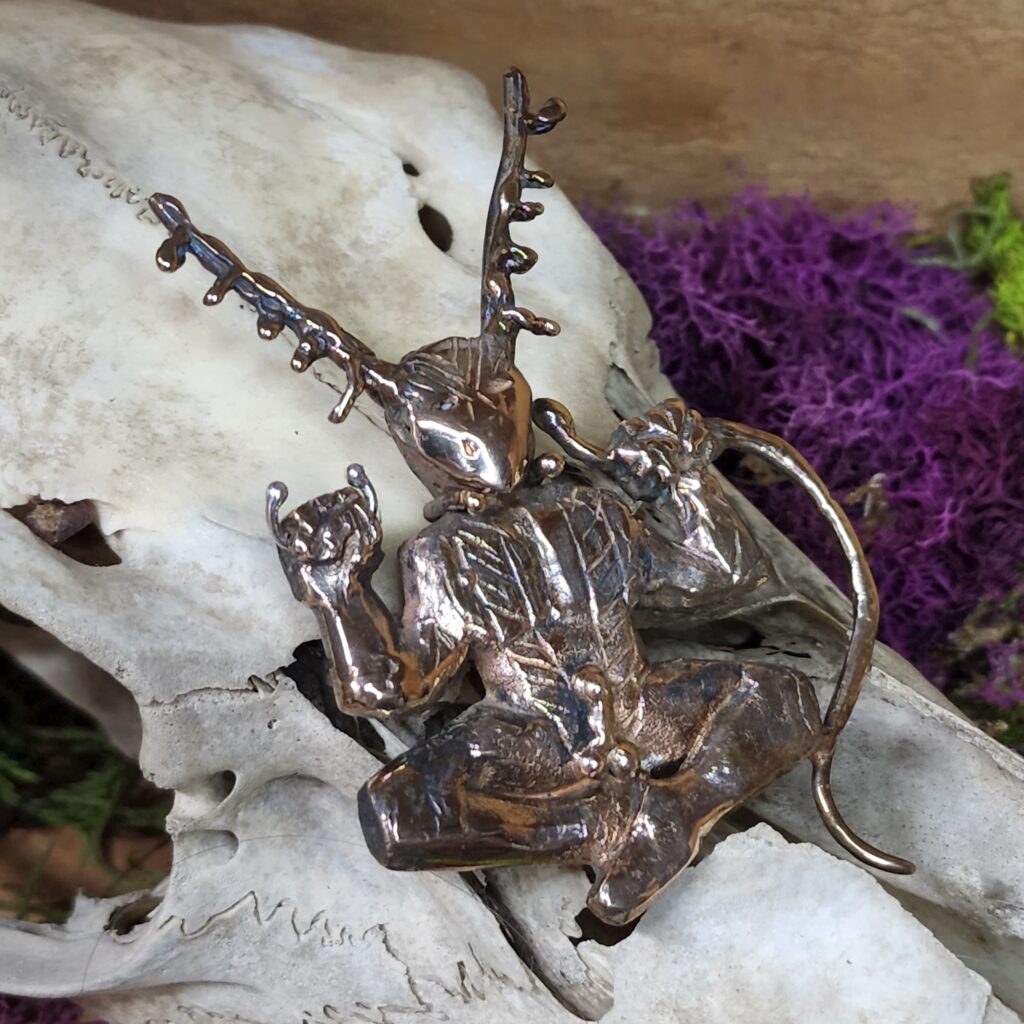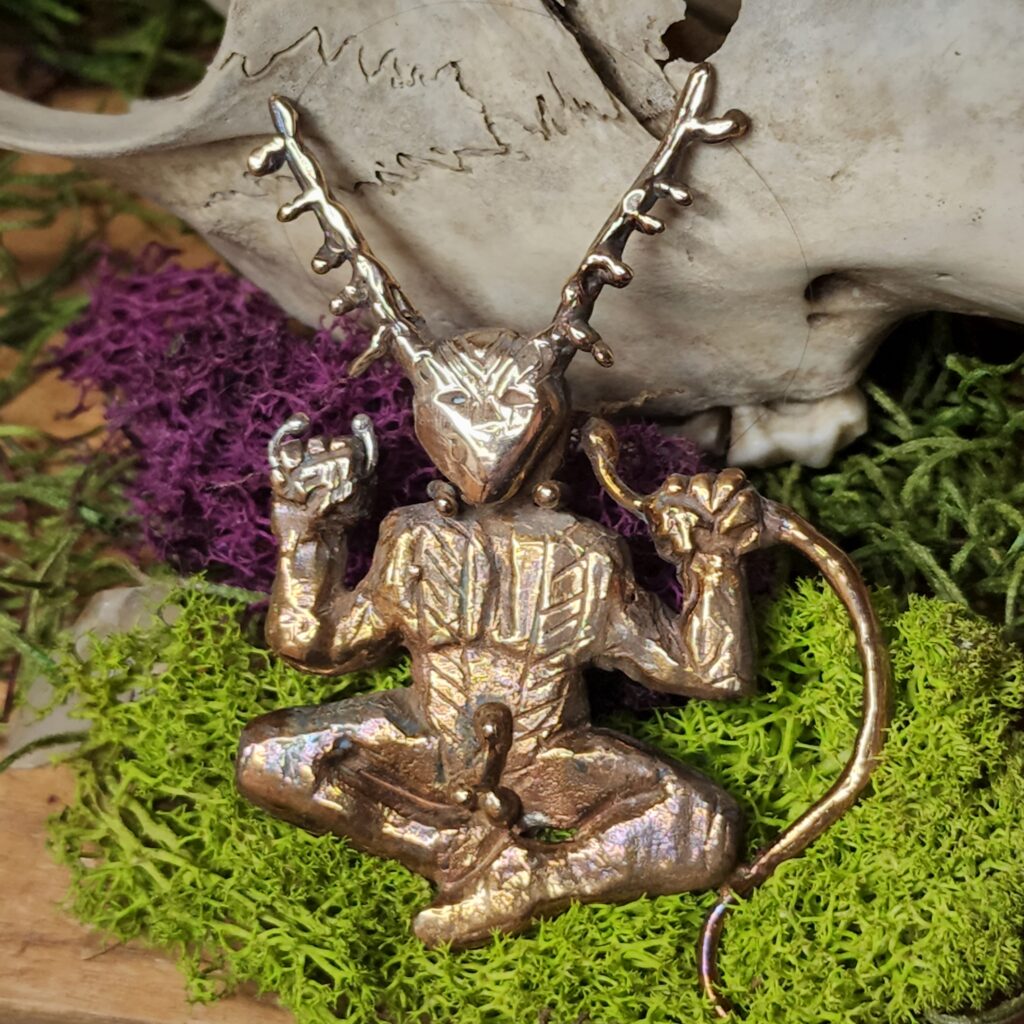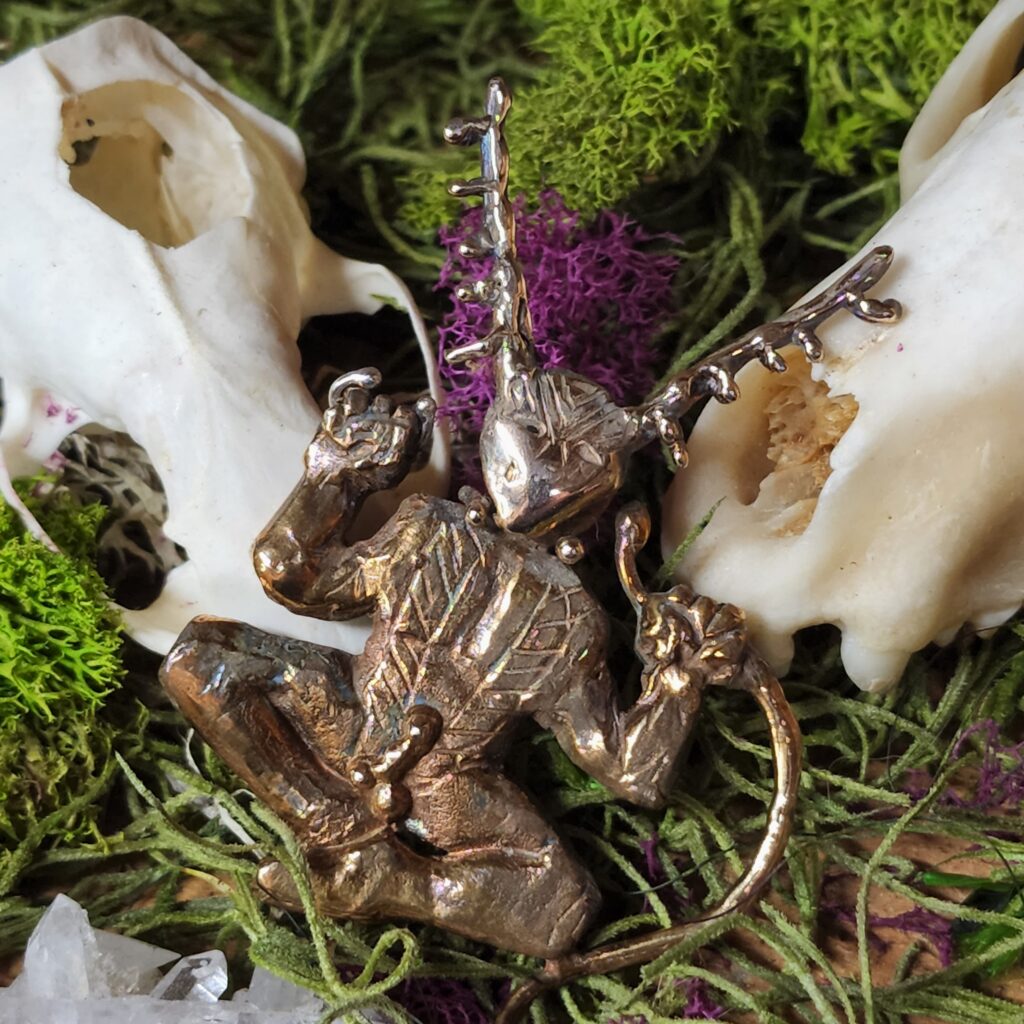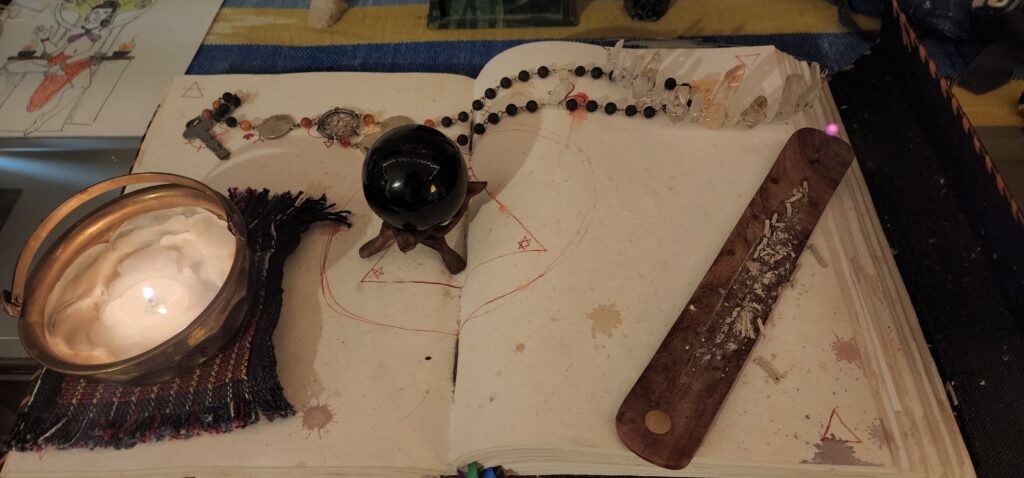It’s been a few months since I’ve last been in a position – either personally or astrologically – to take advantage of an astrological election. I regret the lost opportunities, but so it goes. My latest talismanic experiment was for me alone: al-Thurayya, the Third Lunar Mansion, ruled by Annuncia.
As always, I got my election from Nina Gryphon. I’ve looked at Lunar Mansion elections before, but the moon is finicky – she moves fast enough, and her position varies more from location to location. But the election Nina found for LA was available in KC, too, and I felt … strongly drawn to the attempt.
The image of al-Thurayya, according to Picatrix, is a seated woman with her right hand raised over her head. According to the Picatrix (Book 1,Chapter 4, and Book 4, Chapter 9), it is for the acquisition of good things, safe travel (especially by sea), all works of fire, and to cause love between man and wife. These are all things I want and need, and as an added bonus, the Picatrix speciffically calls for the image to be made as a ring but does not mention any stones. (Book 4, Chapter 9)
I began sketches almost immediately:

I considered ordering a copper plate for my mold positive – I had both the time and money – but decided that it would be better if I hand-carved the wax. So, on several Mondays of January, during the hours of the Moon, I carved a square-topped ring from wax. I’ve carved a portait on that scale before, but never a whole body. To my delight I was able to create a crude but recognizable figure. (The photo makes it look larger than it is, but the figure is actually barely half an inch tall.)

As I carved the wax, I could feel the spirit that would ultimately come to inhabit it. The spirit didn’t speak to me, but it did provide a sense of “hot” or “cold” as I worked to differentiate design elements, flaws, and happy accidents. I had intended to include the seven stars of the Pleiades on the sides, but that detail got lost in the passion of the work.
In the weeks leading up to the election, the spirit – with the aid of my familiars – also provided details and advise on the ritual during my daily offerings. The election would be in the afternoon, but I was to throw the cast in the morning so that I could finish the ring in time to suffumigate it as the Picatrix described: wrapped in cloth. I was also instructed to make a box for the ring, also bearing the image of al-Thurayya.
This timing turned out to be absolutely critical, because the cast did not go as perfectly as I would have liked – some fuckery in the back of the shank – but I was able to do the necessary repairs while the ring was still just jewelry.

With the ring completed to my satisfaction, I took it up from my studio to my altar room, where I spent the last hour before the election mixing the aromatic oils and mastic liquor I would be offering and preparing the box I had been told to make.

When the window of the election opened, I began my ritual: making offerings of fire and liqour and aromatic oils. I read the Orphic Hymns to the Moon and to the stars. I anointed the ring with oil and called on Annuncia, the angel of al-Thurayya, to imbue the ring and fulfill the wishes that I inscribed on the paper image with blacklight ink and gold glitter and ended with the Picatrix’ invocation: “You, Annuncia, make it so.”
I felt Annunica. I felt their power descend into the ring.

This election was just at the end of January, and Nina Gryphon recommends creating your Lunar Mansion talismans in one ritual, then waiting until the moon comes back to that mansion before asking anything of the spirit, but I began to feel the effects of the spirit almost immediately. Not two days later, I was able to successfully throw the final bronze cast for my almost-due wholesale order, producing a quality of bronze talisman that I had not seen in a year.
In the weeks since, the spirit of the ring has given me its name. It has settled in among my other familiar spirits very comfortably. It has also provided some guidance as I begin designing the al-Thurayya ring that I will eventually be offering at the Sorcerer’s Workbench.
I’m very excited to begin working with this spirit in earnest when the Moon comes back to al-Thurayya next week.

